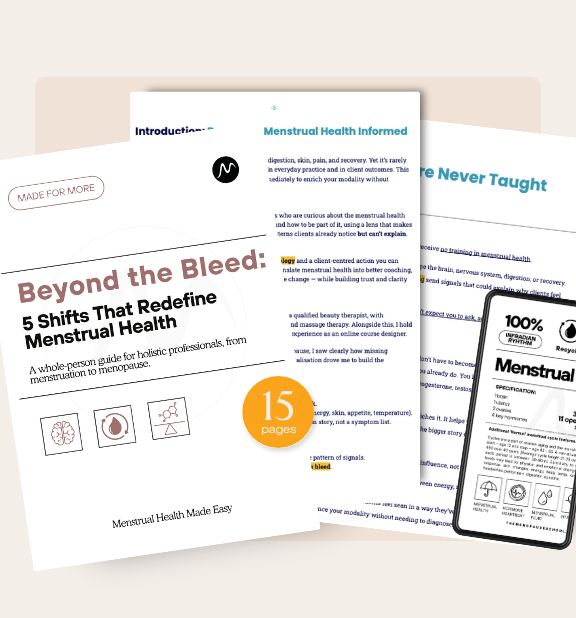Why Ovulation Matters In a Menstrual Cycle
Ovulation isn’t just about fertility — it’s the rhythm-setting event that shapes health across the whole body.

Beyond the Bleed
Most people are taught to think of the menstrual cycle in terms of bleeding. Day 1, mark it in the diary, wait for the next one. Everything else is background noise.
But the ovaries are meant for more than periods and pregnancy. They are designed to generate rhythms that support the entire body, and ovulation is at the centre of that rhythm.
Ovulation is not simply the release of an egg. It is the event that makes the rest of the cycle possible — the moment that activates progesterone, a hormone with far-reaching influence across the brain, bones, mood, and metabolism. Without ovulation, progesterone does not rise in the same way.
The Day 1 Myth
We’re often told that Day 1 of a period means ovulation happened 14 days earlier. But that’s not always true. Sometimes ovulation doesn’t occur. This is called an anovulatory cycle.
The bleed still happens, but the balance between estradiol and progesterone is disrupted. Estradiol is still active, but without the counterpoint of progesterone, its signals fly solo. The result is a ripple effect that can be felt in energy, mood, digestion, or skin.
The Whole-Body Role of Progesterone
From a whole-person perspective, progesterone is an essential hormone [just like estradiol and testosterone it plays a role in all 11 operating systems in the body].
The adrenal glands make a baseline level throughout life, but the surge that follows ovulation is unique. That surge helps regulate sleep, calms the nervous system, supports tissue repair, and balances estradiol’s stimulating effects.
This is why ovulation matters so much. Without it, the body misses out on the protective rhythm progesterone provides. Supporting ovulation is often more impactful than simply teaching someone how to manage PMS or cope with navigating their bleed and the challenges that come with it.
What This Means in Practice
For professionals, ovulation is the hidden anchor behind many of the patterns you already see in your clients.
These shifts aren’t random. They reflect whether or not ovulation has taken place. But because most training never included menstrual health, the dots are rarely joined.
Bringing This Into Your Work
You don’t need to be a medical specialist to begin. You just need the confidence to start a different kind of conversation. Try asking:
“Do you notice changes in your energy across the month?”
“How does your sleep feel at different points in your cycle?”
“Have you ever tracked signs of ovulation, like changes in skin, mood, or digestion?”
These are simple, client-centred questions. They don’t require diagnosis. They create space for awareness — and once awareness begins, your work can adapt to support the body’s rhythm, not just the bleed.
Because supporting ovulation is about more than fertility. It’s about recognising the rhythm that drives menstrual health — and giving clients the chance to understand just how much that rhythm matters.
Course Insight: Supporting Ovulation in Practice -
The frequency of ovulation changes across the menstrual health timeline. Understanding when and why this shift happens makes all the difference to how you support clients. We teach this in Level 1: Lesson 2.0 – Menstrual Cycle Biology, where you’ll learn how to spot these shifts and adapt your work with confidence.
[ → Discover Level 1 Training ]





